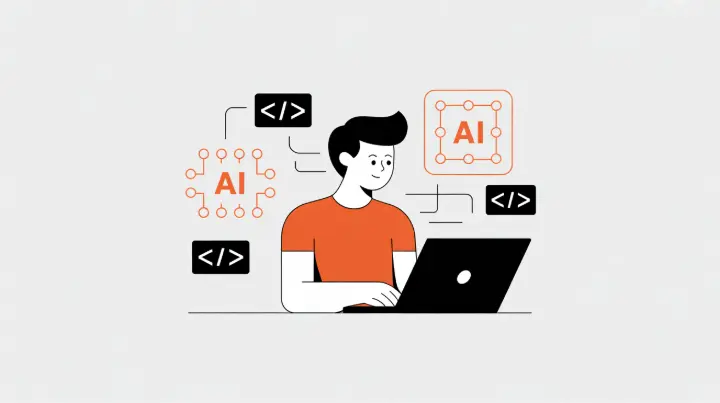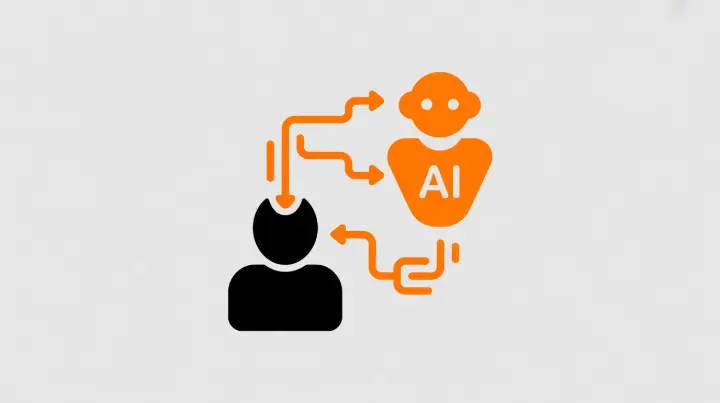The software development landscape is experiencing a seismic shift. Artificial intelligence tools have moved from experimental novelties to essential workplace companions in an incredibly short time.
The numbers tell a compelling story: 90% of software developers now use AI at work, and 65% consider themselves heavily reliant on these tools. This isn't just adoption. It's transformation. But as with any major technological shift, the changes go far deeper than productivity metrics alone.
The New Normal: AI as a Developer's Right Hand
Software development has always been about problem solving, creativity, and craftsmanship.
Today, AI has become an integral part of that equation. The statistics reveal just how thoroughly these tools have embedded themselves into daily workflows.
When 90% of developers are using AI in some capacity, we're no longer talking about early adopters or tech enthusiasts. We're talking about mainstream professional practice.
What makes this adoption particularly interesting is the depth of integration. 65% of developers report being heavily reliant on AI tools, suggesting these aren't occasional helpers but core components of how work gets done.
From code completion and bug detection to documentation generation and architecture suggestions, AI assistants are touching nearly every aspect of the development lifecycle.
Developers are using these tools to accelerate routine tasks, explore unfamiliar codebases, and even learn new programming languages on the fly.

The speed of this transformation is remarkable. Just a few years ago, AI coding assistants were curiosities. Today, they're necessities. This rapid adoption speaks to the genuine value these tools provide in addressing real pain points in software development.
The Emotional Connection: Developers Love Their AI Tools
Perhaps the most telling statistic comes from Microsoft's research: 80% of developers said they would be sad if they could no longer use AI tools.
This emotional attachment reveals something profound about the relationship between developers and these technologies. Sadness isn't the response you'd expect for losing a mere productivity tool. It's what you feel when losing something that genuinely makes your work better and more enjoyable.
This attachment makes sense when you consider what AI tools actually do for developers. They eliminate much of the tedious, repetitive work that has always been part of programming but never the fun part.
Writing boilerplate code, debugging syntax errors, and searching through documentation are necessary but draining tasks. AI handles these with ease, freeing developers to focus on the creative, challenging problems they actually signed up to solve.
The tools also serve as a confidence boost, particularly when working outside one's comfort zone. Need to write code in an unfamiliar language? AI can provide scaffolding and examples. Stuck on a tricky algorithm?
AI can suggest approaches you might not have considered. This supportive presence reduces frustration and helps developers feel more capable across a broader range of tasks.

Augmentation Over Replacement: The Real Story
One of the most important findings in Microsoft's research is that AI is augmenting developers rather than replacing them.
This distinction matters enormously, both for understanding the technology's current role and for thinking about its future. The fear that AI would simply automate developers out of existence has proven, at least so far, to be unfounded.
Augmentation means that AI makes developers more effective at their jobs rather than making them unnecessary. The human developer remains the architect, the decision maker, and the quality guardian.
AI serves as a powerful assistant that extends human capabilities. It can generate code faster than any human could type, but it still requires human judgment to evaluate whether that code is correct, efficient, maintainable, and appropriate for the context.
This partnership model is actually the ideal outcome for both productivity and job satisfaction. Developers get to work at a higher level of abstraction, spending more time on design decisions and less on mechanical implementation.
The work becomes more intellectual and creative, which is precisely what most developers find fulfilling about their profession. Companies benefit from faster delivery and the ability to tackle more complex projects with their existing teams.
The Shadow Side: Solitary Work and Disappearing Collaboration
However, not everything about the AI revolution is positive. As AI handles more routine tasks, an unexpected consequence is emerging: work is becoming more solitary.
The spontaneous collaboration, mentorship, and informal team interactions that have traditionally been central to developer culture are being reduced. This shift deserves serious attention because it threatens to undermine some of the most valuable aspects of software development as a profession.
Think about how learning used to happen in development teams. A junior developer would get stuck on a problem, walk over to a senior colleague, and ask for help. In the process of explaining and debugging together, both would learn something.
The senior developer would share not just a solution but the reasoning behind it, perhaps mentioning similar problems they'd encountered before. These micro-mentorship moments were the connective tissue of development teams.
Now, that junior developer asks an AI instead. The AI provides an answer, often a good one, but without context, without war stories, without the relationship building that comes from human interaction.
The problem gets solved, but the opportunity for mentorship and team bonding is lost. Multiply this across dozens of daily interactions, and you start to see how team dynamics can fundamentally change.
The reduction in spontaneous collaboration affects more than just learning. It impacts team cohesion, collective problem solving, and the development of shared understanding about codebases and architectural decisions.
When developers work more independently, aided by their AI assistants, they may produce code faster but lose the alignment and mutual support that makes teams effective over the long term.

The Management Challenge: Adapting Culture and Communication
For developers and managers alike, these changes mean that simply adopting AI tools isn't enough. The entire workflow, team culture, and approach to communication and guidance needs to adapt.
This is perhaps the most important takeaway from the current moment: successful AI integration isn't just a technical challenge. It's an organizational one.
Managers need to think deliberately about preserving and even enhancing the human elements of development work in an AI-augmented world.
This might mean establishing new norms around collaboration, such as regular pair programming sessions or code review practices that emphasize learning and discussion rather than just catching bugs.
It might mean creating spaces for developers to share what they're learning from AI tools, turning individual discoveries into collective knowledge.
Team communication patterns need attention too. If AI is handling many of the small questions that used to generate quick Slack exchanges or hallway conversations, teams need new ways to stay connected and aligned.
Regular check-ins, show-and-tell sessions, and collaborative problem-solving meetings become more important, not less, as routine interactions decline.
Skills development also requires fresh thinking. What does mentorship look like when junior developers have AI assistants?
Senior developers might need to shift from answering basic questions to teaching critical evaluation, architectural thinking, and the judgment calls that AI can't yet make reliably.
The focus moves from "how do I do this" to "should I do this, and what are the trade-offs."
Looking Forward: Finding the Balance
The integration of AI into software development is not a problem to solve but a transition to navigate. The technology offers genuine benefits that most developers now consider essential to their work.
At the same time, it creates challenges around team culture and collaboration that require intentional responses.
The path forward likely involves embracing AI's strengths while deliberately preserving the human connections that make development teams thrive. This means using AI to handle routine work while creating more structured opportunities for mentorship and collaboration.
It means celebrating the productivity gains while watching carefully for signs of isolation or knowledge silos forming.
Organizations that figure out this balance will gain competitive advantages. They'll move fast thanks to AI augmentation while maintaining the strong team culture that enables sustained innovation and adaptation.
Those that focus only on the productivity side risk building technically proficient but culturally fragmented teams.
The transformation is already here. The question now is how thoughtfully we manage it, ensuring that as we gain powerful new tools, we don't lose the human elements that make software development not just productive but genuinely fulfilling as a profession.